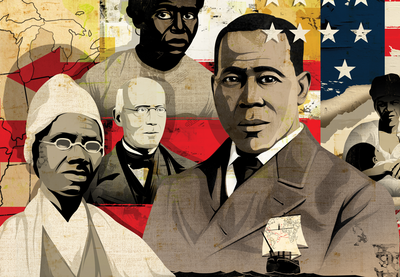European colonists expanded slavery by forcing Africans to come to the Americas.
What Else Should My Students Know?
13.A The African continent has always been full of diverse and thriving societies with rich histories and traditions, but slavery adversely affected every community that it touched.
13.B At least 12.5 million Africans were captured and forced into ships going to the Americas, most arriving in the Caribbean, South America and Central America, where they were sold. One in four of these enslaved people were children.
13.C Enslaved Africans came from many places, including the continental interior. They then endured the Middle Passage‚ the voyage of enslaved people from the west coast of Africa to the Americas. Nearly half of captured Africans died in the journey from their home countries to the Americas.
How Can I Teach This?
- Compare historical and contemporary maps of African nations. Students should identify different communities and map the ways that their boundaries and locations have changed.
- Using world maps, students should locate major colonial powers and trace their global trading routes. They should learn that European countries claimed land all over the world, including in the Americas. The colonial powers took other peoples’ resources, including human labor, to make their own countries rich.
- Teach about the Middle Passage. Books such as The Kidnapped Prince, Amistad: The Story of a Slave Ship and From Slave Ship to Freedom Road will help to center the humanity of enslaved people. The diagram “Stowage on the Slave Ship Brookes, 1788” represents 18th-century guidelines for transporting enslaved people during the Middle Passage. This document was created and used by abolitionists to show that even regulated conditions were inhumane.
- Integrate with state history: As you examine the economic development of your own state, look for connections to slavery. Finding and exploring connections to the history of your state or territory will help students to understand that the history of enslavement is American history and not only regional, African American history or Indigenous history.
